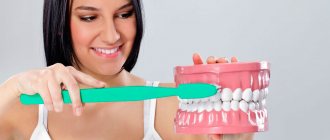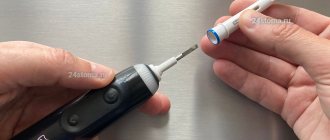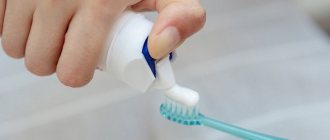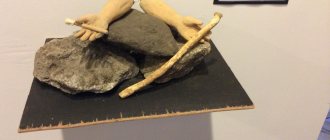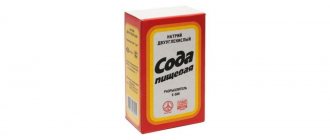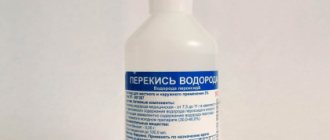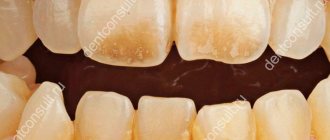Fecal coliform bacteria remain in the bathroom and are scattered throughout the room after the toilet user flushes; they can be a source of illness. You can get rid of the threat only with constant cleaning using antiseptics, but even this does not provide one hundred percent protection: particles can remain on door handles, combs and even toothbrushes.
In addition, devices for cleaning the mouth are already a breeding ground for pathogenic bacteria that remain after contact with the mucous membrane - in the future they can also cause infection. This is why it is so important to take care of their disinfection - we tell you how to approach the matter correctly.
Wash your hands before and after brushing your teeth
Bacteria and viruses are mainly transmitted through the palms - throughout the day they come into contact with many surfaces that are not always sterilely clean.
To stay safe during and after brushing your mouth, you should rinse your hands with soap and water for 20 seconds to remove any particles that might be left on the brush handle. After the procedure, you should also wash your palms to be on the safe side. In an interview with Insider, William Martin, president of the Maryland Dental Association, said that hand rinsing should, in principle, be a basic activity of every person - it will help reduce the risk of contracting viruses and infections, as well as minimize contamination of surfaces that a person touches.
What is important to know
Studies have shown that foods and drinks that contain acids soften tooth enamel when eaten. This is why you should not brush your teeth immediately after eating acidic foods or drinking acidic drinks. Such hygiene can lead to erosion of enamel tissue. To prevent pathological tooth wear, it is better to simply drink water or rinse your mouth with it.
You can brush your teeth only half an hour after consuming highly acidic foods and drinks. But the best option would be to cleanse immediately before eating.
Proper oral hygiene twice a day removes not only food debris, but also plaque, which can harm tooth enamel and gum tissue. Using dental floss daily can help clean the spaces between your teeth. This is the basis of oral health.
To accurately calculate the time spent brushing your teeth, use a timer. Guide the brush with gentle strokes. Clean your gum line and back teeth thoroughly. Carefully work on areas near fillings, crowns, implants and other prostheses. No hard-to-reach areas should be missed!
We offer the following scheme that will allow you to do everything correctly:
- Stage one is sequential cleaning of the outer surface of first the upper and then the lower teeth.
- Stage two is sequential cleaning of the inner surface of first the upper and then the lower teeth.
- Stage three – sequential cleaning of the chewing surfaces of first the upper and then the lower teeth.
- Stage four – cleaning the surface of the tongue. This will give your breath freshness.
Learn how to properly store your toothbrush
The American Dental Association says it should be rinsed thoroughly under running water to remove any food, toothpaste, or tartar. After this, you should leave the brush to air dry in a vertical position - most bacteria die in an aerobic (oxygen) environment.
It is important to store the brush not in a case or small container, but in a spacious place, for example, a cabinet next to a mirror: the fact is that pathogenic particles may remain on the boxes for the device. Also, the brush should be left as far as possible from the toilet and be sure to close the lid before flushing it. You should also avoid leaving multiple brushes nearby, as germs can spread when they come into contact.
When does a brush become dangerous?
American scientists have found that on average, about 100 million microorganisms live on a toothbrush that is stored open. Among them are staphylococcus and other bacteria that can lead to infectious diseases.
After brushing their teeth, the average user simply rinses the brush with tap water. But such cleaning is not effective. At best, water only washes away food debris and surface contaminants, but is powerless against microbes. If your toothbrush is left untreated, bacteria will accumulate on it, increasing the risk of tooth decay, canker sores, bad breath and other dental problems.
Disinfect the brush
If you want to take extra precautions, or if you dropped the device on the floor, you can use hydrogen peroxide or mouthwash.
The first solution is a good antiseptic that destroys harmful particles picked up by the brush from the ground. The second contains alcohol, menthol and eucalyptol, which also help get rid of bacteria. To do this, rinse the bristles under running water, pour a little antiseptic into a glass - enough to cover the brush head, and soak the device for 10-15 minutes. Afterwards, rinse it again and leave it to dry in the open air.
Read on topic:Why and how to cleanse makeup products
Electric brush care
In general, you need to care for an electric toothbrush in the same way as a regular one. The processing rules are not too different. The pocket with batteries and microcircuit is reliably protected from moisture, so the device can be washed without fear.
However, there are several important nuances that need to be taken into account when caring for an electric brush:
- The bristle head wears out within 3 months and must be replaced.
- Discharged batteries should never be left in the device. They may start to leak. Then not only will the brush be damaged, but the acid may get into your mouth and cause poisoning.
- After use, the electric brush should be rinsed with warm water and dried.
When trying to disinfect the device, it is important not to overdo it. Boiling may cause the product to melt. According to GOST, an indicator of 1000 CFU/cm3 of microorganisms on bristles is the norm and, in the absence of diseases of the immune system, cannot lead to infection.
Every day, billions of bacteria come into contact with your toothbrush from your mouth. Among them are streptococci, staphylococci, E. coli, porphyromonas gingivalis, herpes and hepatitis viruses A, B, C, candida albicans, coliform and many others. Improper care can lead to frequent illnesses. It is important to thoroughly wash and dry the bristles, choose a suitable place to store brushes, and observe personal hygiene rules. Every 3 months the device must be replaced.
Use ultraviolet light
According to a study published in the American Journal of Dentistry back in 2008, UV light kills bacteria and some viruses by disrupting their molecular bonds. It also found that light was slightly less effective than alcohol or peroxide, but if you have an ultraviolet lamp on hand, this is a good way to use it.
Leave the brush next to it for a few minutes, then air it out in the open air. We do not recommend using a dishwasher or microwave as an alternative - the high temperature inside the equipment can damage the brush or even melt it.
How to properly brush children's teeth?
A child can be introduced to an electric toothbrush from the age of 3 years. But up to 7, you should guide the brush and not let go of it while brushing. During this period, it is important to teach the child to spit the toothpaste and rinse his mouth.
The technique of brushing teeth in adults and children is no different - the only difference is that parents help children brush their teeth. Sit in a way that is comfortable for both of you: sit the child on your lap or stand behind him in front of the mirror. If your brush does not have a built-in two-minute timer, use a special application that will motivate and captivate the child (for example, some applications gradually open a picture of cartoon characters while brushing teeth).
Keep your brush safe while traveling
To ensure that it does not become a breeding ground for bacteria, get a separate case or cosmetic bag where only the cleaning device will be stored.
Upon arrival, unpack your things, leaving the brush in the bathroom and rinsing it first. Before you leave, rinse it, dry it thoroughly, disinfect the storage case and place the brush in it.
Storage rules
Germs simply love dark, damp, cool places, like the bathroom. In such conditions, they remain viable for a long time and reproduce. For example, on a poorly washed wet brush. The correct way to store it is as follows:
- Use a special vertical cup with a separate hole for each toothbrush. It is important to avoid cross-contamination from other surfaces, including brushes from other family members.
- Take care of ventilation. The washed bristles should dry completely. Do not place the brush directly into the container. By and large, it is intended only for transportation or storage on the road.
- For a shared bathroom, choose a storage location away from the toilet. When flushed, harmful particles enter the air and then settle on nearby surfaces within a radius of 1.8 m. If it is impossible to move the brush over such a distance, you should purchase a protective cap with ventilation holes.
- Keep the brush storage container clean. Wash the cup or holder at least once a week with soap and hot water. To remove stains, use baking soda and a sponge that has not been used on the sink or other surfaces.
How to store and how not to store?
It is worth noting! Proper storage of a personal hygiene item will extend the life of a personal hygiene item, and for this you need to follow some recommendations:
- Keep products only in a dry and ventilated place. A bathroom cabinet is not suitable for this, as it has high humidity, elevated temperature and lack of natural light. These conditions are favorable for the proliferation of pathogenic microflora.
- It is best to allocate a separate cup for dental cleaning equipment Just don’t store several items in it at once.
- After suffering from a cold or acute respiratory viral infection, you need to change or thoroughly disinfect your dental appliance. For these purposes, special devices are suitable, for example, a sterilizer for such products. Thanks to it, you can sterilize the device quickly and efficiently at home.
- The container where the product is stored must always be clean.
- Once every 3 days, you need to disinfect the device using an antibacterial rinse or special solutions that can disinfect the bristles.
- Store the product only with the head up. Thus, the hairs will dry quickly, microbes will not multiply, as a result of which the device will not turn black and will not deteriorate so quickly.
- Flies and other insects should not land on the surface of the brush, as they can act as carriers of the disease.
- In reserve , you need to take care of a special case in which you can store the product while traveling.
Remember! Even a person who regularly disinfects their device needs to change their toothbrush every 3 months.
The fact is that over time, the hairs will become soft and will no longer be able to fully perform their functions.
Professional hygiene
If the plaque has already turned into stone, only a dentist can remove it. At the same time, it is not possible to completely remove plaque even if you follow all the rules for brushing your teeth. Therefore, everyone who cares about their dental health is recommended to visit the dentist twice a year and have their teeth professionally cleaned. In advanced cases, gingivitis also forms, a painful inflammation of the gums.
What does professional oral hygiene include?
The first stage of oral care in the dental office is diagnosis and analysis of existing problems. Based on these, procedures are prescribed, which most often include cleaning plaque and stone (if necessary, with anesthesia).
Pigmented plaque is cleaned with a special Air Flow apparatus, which operates using a jet stream of aerosol containing sodium bicarbonate.
In modern dental clinics, ultrasound is used during cleaning, which removes soft and hard deposits from the enamel. In this case, the teeth are not damaged, plaque and stone are gently peeled off from visible surfaces.
The next stage is the treatment of intergingival spaces. This is a manual procedure that requires care and professionalism from the dentist.
After the stone is removed, the enamel is polished to protect it from bacteria. This is done using polishing pastes and special brushes and rubber bands.
Professional cleaning ends with the application of fluoride-containing varnish to the enamel, which provides additional protection and makes teeth less sensitive. The price of such a procedure depends on many factors, but you should not skimp on dental health.
